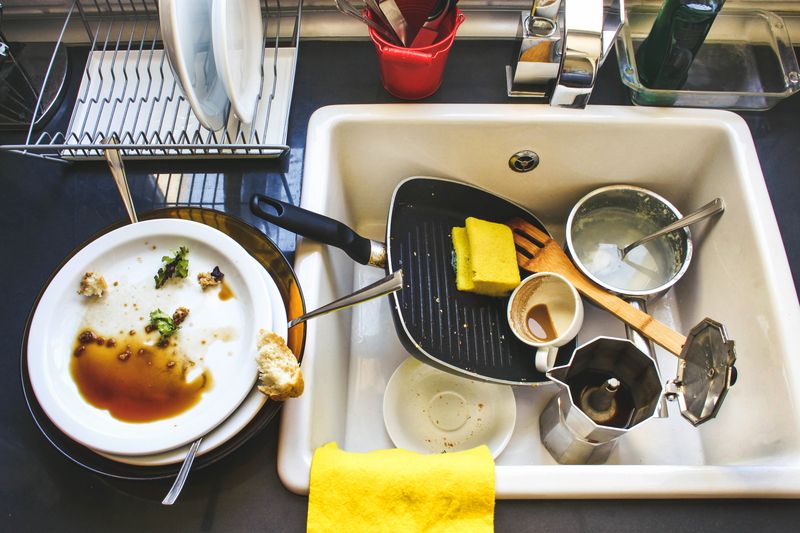Your Go-To Guide for Moving Bed and Mattress
Posted on 17/06/2025
Your Go-To Guide for Moving Bed and Mattress
Relocation can be both exciting and overwhelming, especially when it comes to handling large items like beds and mattresses. Whether you're switching apartments, moving across the country, or helping a friend, this comprehensive guide will take you step by step through the best practices for moving a bed and mattress safely and efficiently.

Why Is Moving Your Bed and Mattress Different?
Beds and mattresses aren't just pieces of furniture - they're investments in your comfort and health. Unlike chairs or small tables, moving a bed or mattress requires special planning and equipment to avoid damage and ensure you get a good night's sleep in your new place.
- Size and Weight: Mattresses and bed frames are bulky, often heavy, and cumbersome to maneuver through tight spaces.
- Susceptibility to Damage: Mattresses can easily bend, rip, or get stained during a move. Bed frames with fragile elements or upholstered headboards need special care.
- Potential for Injury: Incorrect handling can result in back strain or injury.
Essential Packing Supplies for Moving Beds and Mattresses
Preparation is key. Having the right supplies for your bed and mattress move will make the process safer and smoother:
- Mattress bag or plastic wrap (to protect against dirt, water, and tears)
- Bubble wrap, moving blankets, or furniture pads (for fragile bed parts)
- Wrenches and screwdrivers (for disassembling bed frames)
- Plastic bags and masking tape (for screws and hardware)
- Ratchet straps or moving straps (to carry and secure your items)
- Furniture dolly or hand truck
- Cardboard boxes (for bedding and smaller bed components)
- Labels and marker (to keep hardware and pieces organized)
Step-by-Step Guide to Moving a Bed and Mattress
1. Prepare Your Moving Pathway
Before anything else, clear the route you'll take with the mattress and bed frame. Remove rugs, obstacles, or narrow furniture that might block your way. Ensure that stairs, hallways, and doorways are wide enough for your bed and mattress.
2. Strip the Bedding
- Remove all sheets, pillows, comforters, and mattress toppers.
- Pack bedding separately in a labeled box or plastic bag.
3. Disassemble the Bed Frame Carefully
This is where having a moving bed checklist helps.
- Take photos before disassembling. This will help with reassembly.
- Remove and wrap slats, headboard, and footboard. Use bubble wrap for fragile or ornate parts.
- Collect all nuts, bolts, and screws in a plastic bag, label it, and tape it to a large part of the bed.
- If you have a platform or adjustable bed, consult the manufacturer's guide for safe breakdown instructions.
4. Protect Your Mattress
Mattress protection is critical to prevent stains, rips, or moisture damage. Sliding it into a thick mattress bag is one of the best ways to prepare for moving a mattress.
- If a mattress bag isn't available, use heavy-duty plastic wrap or moving blankets.
- Secure the cover tightly with tape, but avoid sticking tape directly to the mattress fabric.
5. Carry and Transport Your Items Properly
Moving a bed and mattress is often a two-person job. Here's how to do it safely:
- Lift with your legs, not your back.
- Tilt the mattress slightly and carry it on its side through doorways.
- Use a dolly for large or heavy pieces to minimize effort and avoid injury.
- Cover bed frame corners with bubble wrap or towels to prevent dings.
6. Load Your Mattress and Bed Frame into the Moving Vehicle
Here's how to avoid damage during transit:
- Lay the mattress flat in the moving truck (never upright), or stand it on its side only if necessary and there's no risk of bending or folding.
- Place the bed frame parts beside the mattress, ensuring they're secure and won't shift during the move.
- Use ratchet straps to secure both mattress and frame to the side of the van or truck.
- Do not place heavy boxes or furniture on top of your mattress to prevent sagging.
7. Unload and Reassemble at Your New Home
- Unpack and inspect the mattress for damage or moisture before setting it up.
- Follow your photos or manual to reassemble the bed frame.
- Let the mattress air out for a few hours before making the bed, especially if it's been compressed or wrapped tightly.
Special Tips for Moving Different Types of Mattresses and Beds
Memory Foam and Latex Mattresses
These mattresses are heavier and bend more easily but can tear or fold permanently if mishandled:
- Never fold a memory foam mattress more than 30?, or as per manufacturer instructions.
- Use two or more people to avoid tearing or excessive bending.
Spring Mattresses
- Avoid placing anything heavy on them to protect the coil system.
- Use a sturdy mattress bag to prevent tears by exposed springs.
Adjustable Beds and Platform Beds
- Consult product manuals for proper disassembly and moving instructions.
- Disconnect electric or hydraulic components carefully and pack cables separately in labeled bags.
Upholstered and Captain's Beds
- Encase the upholstery in plastic wrap, and use furniture pads to shield against scrapes.
- Wrap drawers tightly or remove them for separate transport if possible.
DIY vs. Professional Movers: What's Best for Your Bed and Mattress?
If you're deciding whether to move your bed and mattress yourself or hire professionals, consider:
- Distance: Long-distance moves may justify hiring experts for secure packaging and transit.
- Manpower: Large beds or upstairs moves require more hands (or stronger ones!)
- Equipment: Professional movers have the right dollies, straps, and custom covers.
- Insurance: Movers often include coverage for your items, offering peace of mind.
- Budget: DIY is less expensive, but riskier if you lack help or equipment.
Tip: If you're unsure, get a quote from moving companies for moving a mattress or bed frame and compare against your own costs and time.
Common Mistakes to Avoid When Moving Beds and Mattresses
- Skipping mattress protection: Mattresses can pick up stains and odors easily.
- Poor labeling of hardware: Tiny screws and connectors are easy to lose.
- Lifting alone: Beds and mattresses can cause injury if not handled with help.
- Improper stacking in vehicle: Avoid stacking heavy items on top of the mattress.
- Ignoring mattress orientation: Bending or folding most mattresses can cause lasting damage.
How to Dispose or Donate a Mattress Responsibly
If your move is an opportunity to upgrade your bed, you might need to dispose of or donate your old mattress:
- Donation: Local charities, shelters, or furniture banks often accept used beds in good condition.
- Recycling: Many components (wood, metal springs, foam) are recyclable; check for local programs.
- Proper disposal: Never leave mattresses on the curb unless your city has a scheduled bulk pickup service.

FAQs on Moving Beds and Mattresses
Can you fold a mattress for moving?
No - Unless specified by the manufacturer, folding most mattresses can cause permanent damage. Memory foam can tolerate mild bending, but traditional spring mattresses rarely should be folded.
How do you move a mattress by yourself?
Use a mattress sling or moving strap, and slide it when possible rather than lifting. Always keep the pathway clear and enlist help for stairs or tight spaces.
Should you keep your mattress upright or flat during a move?
Ideally, keep the mattress flat to maintain its structure and avoid damage to internal coils or foam layers. Stand it upright only if space is limited, and never stack anything heavy on it.
How do you clean a mattress before and after a move?
- Before moving: Vacuum thoroughly and spot-clean any stains.
- After moving: Let it air out, and spot-clean if there are any new issues.
Is it worth moving an old mattress?
If your mattress is over 7-10 years old, sagging, or uncomfortable, consider replacing it instead of moving it - you'll save time, space, and effort.
Conclusion: Stress-Free Mattress and Bed Moving
With organized planning, the right supplies, and these expert tips, moving your bed and mattress can be a smooth part of your next move. Remember: protect your sleep investment, pack thoughtfully, and don't hesitate to ask for help when needed. For a seamless transition, use this go-to guide for moving your bed and mattress every time you're on the move!
Ready to relocate your next snooze nest? Bookmark this guide and share with friends or family planning a move. Sleep easy knowing that your bed and mattress will arrive safe, clean, and ready for your first restful night in your new home.





